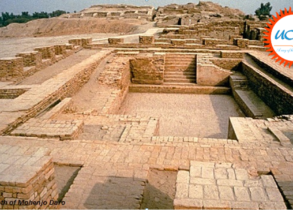Ancient and Medieval Storage
Q. In India, ancient and medieval storage structures such as the step wells, are not only magnificent in their conception, architecture and ornamentation but also hold a lesson for contemporary water concerns. Discuss with examples.
Approach:
- Briefly describe the reason behind the development of traditional storage structures in India.
- Discuss the ancient and medieval storage structures, highlighting their unique features.
- Conclude by linking it with contemporary water concerns in India.
Answer:
In ancient and mediaeval India, both floods and droughts were frequent occurrences, which led to the development of numerous traditional water harvesting techniques that reflect the geographical idiosyncrasies and cultural distinctiveness of the various regions.
The conception, architecture, and aesthetic appeal of ancient and mediaeval water storage devices are distinctive. These consist of:
- Stepwells/baolis: Baolis are wells in which the water is reached by descending a step of stairs. These stepwells typically have beautiful arches, carved motifs and sometimes, rooms on their sides. Examples Rani ki Vav in Gujarat, Agrasen ki Baoli in Delhi etc.
- Canal construction: Canals were constructed by the Harappan people to support irrigation, water transport etc. In the medieval era, Firoz Shah Tughlaq constructed a ‘double system of canals’ from Yamuna to Sutlej to support the newly founded city of Hissar-i-Firoza. Similarly, Chola rulers constructed several canals along the Kaveri river such as the Uyyakondan canal, which is currently being restored.
- Tank irrigation system: Huge tanks such as the Sivaganga tank and Cholagangam tank were built by the Chola kings to collect and store water. Also, the Eri (tank) system of Tamil Nadu, help in flood-control, prevent soil erosion and wastage of runoff during periods of heavy rainfall, and recharge groundwater.
- Johads: These are small earthen check dams constructed in an area with naturally high
elevation on three sides that capture and store rainwater.
- Talabs/ Pokhariyan: These are reservoirs that store water for household consumption and drinking purposes. For example, construction of pokhariyan ponds at Tikamgarh in the drought-prone Bundelkhand region.
- Ahar Pynes: They are traditional floodwater harvesting systems indigenous to South
Bihar. Ahars are reservoirs with embankments on three sides and Pynes are artificial rivulets. In relatively low rainfall regions in South Bihar, ahar pynes are used for paddy cultivation.
- Jhalaras: Jhalaras are typically rectangular shaped stepwells built in ancient times that have tiered slopes on three or four sides, which collect the subterranean seepage of an upstream reservoir or a lake. For example, Mahamandir Jhalara of Jodhpur.
- Zings: These are small tanks found in Ladakh that collect melting glacier water. A network of guiding channels brings water from the glacier to the tank.
- Zabo system: This traditional water harvesting system of Nagaland combines water
conservation with forestry, agriculture and animal care. Rainwater that falls on forested hilltops is collected by channels that deposit the run-off water in pond-like structures created on the terraced hillsides.
The amount and quality of surface and groundwater are in danger as India struggles with growing urbanisation, rising water use, and pollution. Therefore, efforts should be made to resuscitate the aforementioned environmentally benign and cost-effective antique and mediaeval water storage technologies.





